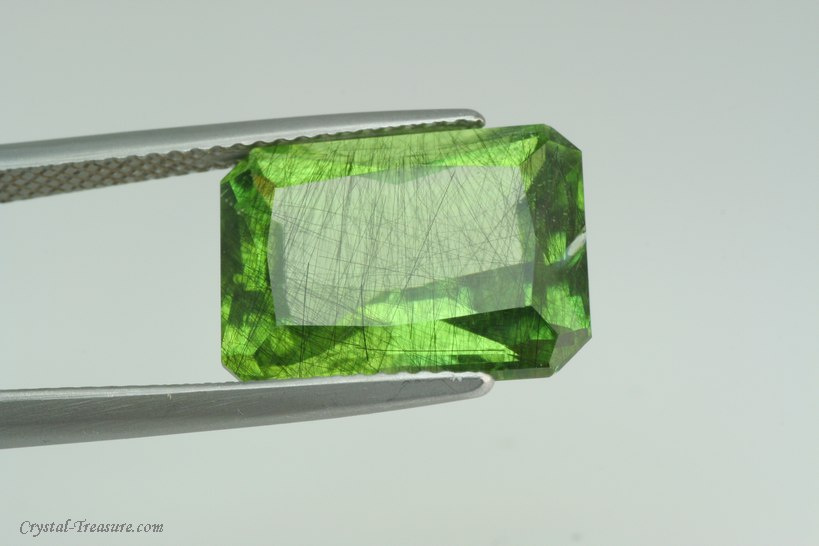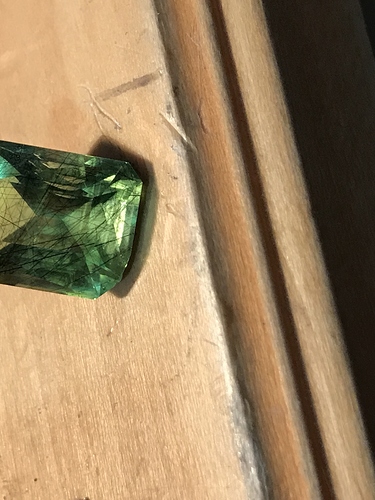I am quite new to the world of gems, however am a practicing geologist for many years. If I it spelled wrong I have come across what I believe to be a darker green peridot with black riticulation of what I suspect to be cromite.
I am setting up mentally how I would like to cut this stone, and am unclear if I should try to frame the riticulation in the table, the color is darker than I would expect for a peridot but the stone is large probably 20, 15, 15mm in x,y,z . I would be interested to learn how the riticulation will effect the value, it is not extensive, but visible as individual black needles. I can post a pick of the rough if it is helpful, and I find out how to in the forum.
Peridot is not a rare stone and value in general is determined by how close to ideal the color and clarity is. While yours is a fairly large specimen, it is, from your description, less than ideal in color or clarity. So you might consider it a 5 to 7 out of 10 in color and a 4 to 6 in clarity and consider the value on that basis. Probably not more than a few dollars per carat, if that. If it were well cut in some novelty cut that showcased the needle inclusions under the table, perhaps it could be marketed on that basis. Alternatively, if there are clear areas that could be cut after the inclusions are cut out, you could calculate an alternative value that way and see which seemed better. Aside from novelty stones like a topaz with one black needle in the middle which are hard to find, there isn’t much call for stones which showcase inclusions. Something like a demantoid garnet with horsetail inclusions is an exception because the horsetails prove identity and because there are so few demantoids that the inclusions can be tolerated to get a stone which is of good color and size. So it may be that this stone will have more value for you as a geologist than it does to most jewelry oriented buyers. At least that’s my opinion…
Probably Rutile needles
I think you may have meant “Rutilated”? Observation may lead one to conclude rutile needles, but in Forsterite. (esp. that of peridots of Pakistani origin), Ludwigite is a very common occurrence. This image may look like what you are seeing…
Yep, that’s Ludwickite, as found in the Pakistani peridot.
*Ludwigite …
Thank any idea how it affects the value the guide puts it at 55 to 500 USD per ct. this stone is 12.5 by 10 and 7.5 ct.
just curious

